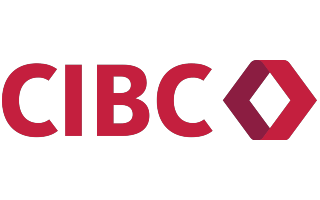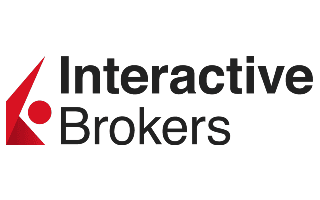Investing in your 20s can be equal parts thrilling and daunting. The good news? You don’t need to be debt-free to start building your investment portfolio. Even if you don’t have much to contribute, a little can go a long way.
1. Analyze your finances
First thing’s first: you’ll need to get an accurate picture of your finances. And the best way to do this is to sit down and document your current income, expenses, debt and available savings – in other words, make a solid budget. If the thought of plotting your finances feels daunting, opt for a budgeting app to help you navigate the process.
Once you have a better idea of where your finances stand, you’ll know exactly how much you can afford to allocate toward potential investments. Thanks to compound interest, a little can go a long way — especially when you start early.
Doing the math: the magic of compounding interest
Think you need a lot of cash to start investing in your 20s? Think again. Enter the power of compound interest. Let’s say your goal is to build a $1 million dollar nest egg by the age of 65.
At 20 years old, if you put $188 per month into a tax-deferred investment account with an interest rate of 8%, you’ll have over $1 million to your name by the age of 65.
Now, let’s say you wait until you’re 30 to start investing. To reach that same $1 million dollar milestone by age 65, you’d need to bump your monthly investment up to $433 per month — more than double the amount required of your 20-year-old self.
That’s compound interest at work. And it’s at its most powerful when given a lot of time to perform.
2. Start an emergency fund
An emergency fund is a powerful, practical investment for your future. Before opening an RRSP or self-directed brokerage account, consider building out your emergency fund.
An emergency fund can help you cover unexpected expenses, from medical bills to the sudden loss of a job. It can act as a financial safety net, lending reassurance that your expenses will be covered should you need a sudden influx of cash or find yourself without a consistent source of income.
The question is: how big does your fund need to be? Many advisers suggest an emergency fund that is capable of covering 3 to 6 months of living expenses. Break down your monthly accounts and isolate your expenses. Aim for a minimum of 3 times that much in your emergency fund.
Where should I store my emergency fund?
While the movies would have you believe stashing cash under mattresses or floorboards is a a good option, it’s not the most practical one. Especially since mattresses and floorboards don’t generate interest.
Consider a high-yield savings account for an emergency fund that’s easy to access and can help your money grow through interest.
3. Open an RRSP or TFSA
Once you’ve assessed your finances and established an emergency fund, it’s time to take a look at opening a retirement account. Think it’s too early to worry about retirement? Remember: compound interest is your friend, and retirement accounts can be a powerful asset as you begin the process of building a nest egg.
Registered retirement savings plan (RRSP)
RRSPs are a good choice if you’re goal is to save up for your retirement and you don’t need to access the money anytime soon. The biggest benefit of putting your money into an RRSP is that you can deduct the amount you put into it each year from your taxes. The downside is that you’ll be taxed heavily on withdrawals you make earlier than anticipated. This type of investment is a particularly good fit for high-income earners.
Tax-free savings account (TFSA)
TFSAs allow you to save money over the long term, but still have access to it in an emergency. The biggest benefit of having a TFSA is that you can take your money out whenever you want without being penalized. The downside is that you won’t be able to claim any money you put in a TFSA as a tax deduction. This type of investment is a particularly good fit for those who are in a lower tax bracket or don’t have much to invest.
TFSA vs RRSP: Which investment is better?
4. Apply for a self-directed brokerage account
Self-directed brokerage accounts have fewer limitations than retirement accounts. You can move money into and out of a brokerage account at any time and for any reason. The biggest drawback is that it isn’t equipped with the type of tax advantages offered by RRSPs and TFSAs. Namely, you’ll owe capital gains tax on any profit you turn from selling an asset in your brokerage account.
But if you’re looking for free rein to invest in stocks, bonds, ETFs and the like, you may want to explore your brokerage account options.
When assessing your platform options, consider:
- Fees. Commission-free stock trades have become the norm, but be on the lookout for fees when swapping mutual funds, options or futures. Account transfer fees are also common.
- Available securities. What do you plan to trade? Most platforms offer access to stocks and ETFs, but if you’re seeking something a little more niche — like forex or crypto — your platform options may be limited.
- Learning curve. Some platforms, like Wealthsimple, were designed with the beginner investor in mind. Others, like Interactive Brokers, are tough for newbies to navigate.
- Customer support. If you’re new to trading, you may want to opt for a platform that offers robust, highly-rated customer service, like Qtrade Direct Investing.
- Research tools. Experienced traders rely on sophisticated research tools to help inform their trades. If you anticipate making numerous trades, opt for a platform with powerful charting tools, like Scotia iTRADE.
Compare stock trading platforms
You can compare features of stock trading platforms in the table below. Once you’ve decided on the right fit for your needs, click the “Go to site” button to get started.
Finder Score for stock trading platforms
To make comparing even easier we came up with the Finder Score. Trading costs, account fees and features across 10+ stock trading platforms and apps are all weighted and scaled to produce a score out of 10. The higher the score the better the platform - simple.
5. Explore robo-advisors
If making your own trades sounds overwhelming but you’re still interested in investing, you can always place your investments with a robo-advisor. Robo-advisors are digital, algorithm-driven programs designed to manage your portfolio on your behalf. When you sign up, you answer questions about your risk tolerance and investment goals. And based on your responses, the robo-advisor will pick investments on your behalf and rebalance your portfolio as it sees fit.
Some trading platforms — like Wealthsimple Invest — offer a robo-advisor service, but not all. Others, like CI Direct Investing, offer robo-advisors and nothing else. Either way, if you decide to use one, be prepared for an annual advisory fee of usually 0.3% to 0.6% of your account balance.
6. Increase your risk tolerance
When it comes to investing, there’s a lot of talk about risk tolerance. And all risk tolerance means is the level of risk you’re willing to carry with your investments. Older investors who are closer to retirement typically have low risk tolerance: they prefer safer investments, like bonds and CDs, that offer consistent returns — although the relative safety of these investments typically comes with less competitive earnings.
Younger investors, on the other hand, can often afford to carry more risk. Why? Because in the event you suffer a loss — even a sizable one — you have plenty of time to recover. Increasing your risk tolerance means your asset allocation strategy becomes more heavily weighted with high-risk, high-reward investments, like growth stocks.
While your age factors into your risk tolerance, keep in mind that it all comes down to your investment goals and preferences. If you prefer to play it safe, dial back your risk exposure. It’s your money, and they’re your investments.
7. Monitor your investments
No matter the size or location of your portfolio, you should regularly monitor your investments to see how they’re doing. And the frequency with which you check your investments depends on your trading strategy. If your portfolio is managed by a robo-advisor, you may want to check in once per quarter. If you’re an active investor tracking volatile stocks, you may find yourself wanting to check in more frequently.
But be careful: financial experts warn that over-monitoring your investments is potentially harmful. There’s nothing wrong with keeping an eye on things — but don’t get consumed. Too-frequent checking can lend itself to impulse trading, and frequent buying and selling tend to damage returns — at least for new traders.
Bottom line
Investing in your 20s offers the opportunity for growth and gain. It’s never too early to start thinking about your future, and an investment portfolio is a practical way to start building up your financial security. To get started, explore your brokerage account options by features and fees to find the platform that can help you meet your financial goals.
Frequently asked questions
More guides on Finder
-
How to trade futures
Futures trading can be rewarding, but it’s not for everyone. Learn the steps to trade futures, including examples and fees to consider.
-
Investment calculator
Use this calculator to find out how much you can grow your money.
-
Investing in your 40s: 8 ways to prepare for retirement
How to invest for retirement: 8 ways to safeguard your portfolio.
-
6 places to find investment advice
Tips for beginning investors and high net-worth individuals alike.
-
Retirement planning
Get actionable tips on how to prepare for your ideal retirement.
-
Investing in your 30s: 8 wealth-building tips
Prepare to revamp your asset allocation and explore new investment classes when you’re in your 30s.
-
Real estate investment
Check out these real estate investment options from REITs and rentals to mutual funds, house flipping and more.
-
Questwealth Portfolios vs Wealthsimple: Which robo-advisor is right for you?
Find out which of these popular Canadian robo-advisors you should choose to for your financial situation.
-
What are bonds?
Bonds are fixed-income assets that earn interest. But bonds may underperform other asset classes in the long run.



